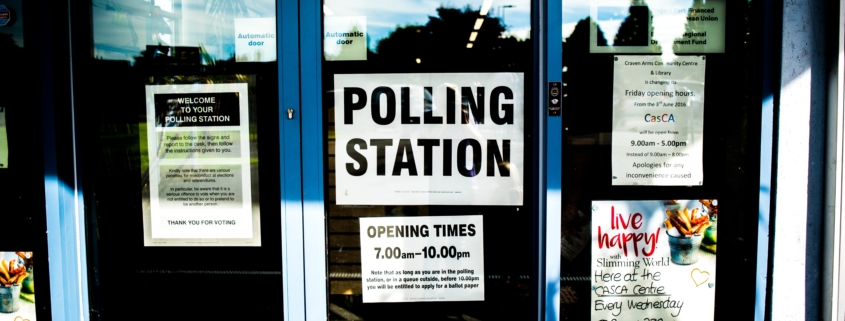15 Days Remaining
Yesterday’s blog post talked about Congress’ efforts toward increasing accessibility for voters with limited English proficiency. It is only appropriate that we address other forms of accessibility that have hindered voter participation throughout history.
In 1984, Congress passed the federal Voting Accessibility for the Elderly and Handicapped Act, which “requires accessible polling places in federal elections for elderly individuals and people with disabilities.” The Act specifically defines “accessible,” “elderly,” “federal election” and “handicapped” as such:
(1) “accessible” means accessible to handicapped and elderly individuals for the purpose of voting or registration, as determined under guidelines established by the chief election officer of the State involved;
(2) “elderly” means 65 years of age or older;
(3) “Federal election” means a general, special, primary, or runoff election for the office of President or Vice President, or of Senator or Representative in, or Delegate or Resident Commissioner to, the Congress;
(4) “handicapped” means having a temporary or permanent physical disability; and
It is the responsibility of local governments to fulfill their obligations to this federal act, so as to ensure increased voter participation by improving access to registration facilities and polling places. The Disability Rights Section of the Civil Rights Division (U.S. Department of Justice) explains that if no accessible locations are available to serve as a polling place on election day, it is the responsibility and duty of the political subdivision to provide alternative means to guarantee voter access. The Attorney General is then charged with enforcing this Act and seeing to it that state election officials have complied under the full conditions of the law.
This law also requires states to make available registration and voting aids for disabled and elderly voters, including information by telecommunications devices for the deaf (TDDs), otherwise known as teletypewriters (TTYs). The unique needs of voters must be recognized. Every individual is a member of the collective, and the Voting Accessibility for the Elderly and Handicapped Act works to ensure the words we have heard so many times in this country; every vote counts.
It is essential that all citizens are able to partake in their fundamental right to vote. To have limited access to voting facilities is to silence and disregard a portion of the population, which effectively defeats the purpose of democracy. It was long overdue, then, that this Act was signed into law.
Please visit www.ada.gov/votingck.htm to learn more about the Americans with Disabilities checklist for accessible polling places. Accessibility as applied to polling places focuses on all areas important to voting, including parking, drop-off/loading, entrances, and interior and exterior pedestrian routes. It is every American’s right to vote, and vote without barriers of any kind.




Leave a Reply
Want to join the discussion?Feel free to contribute!